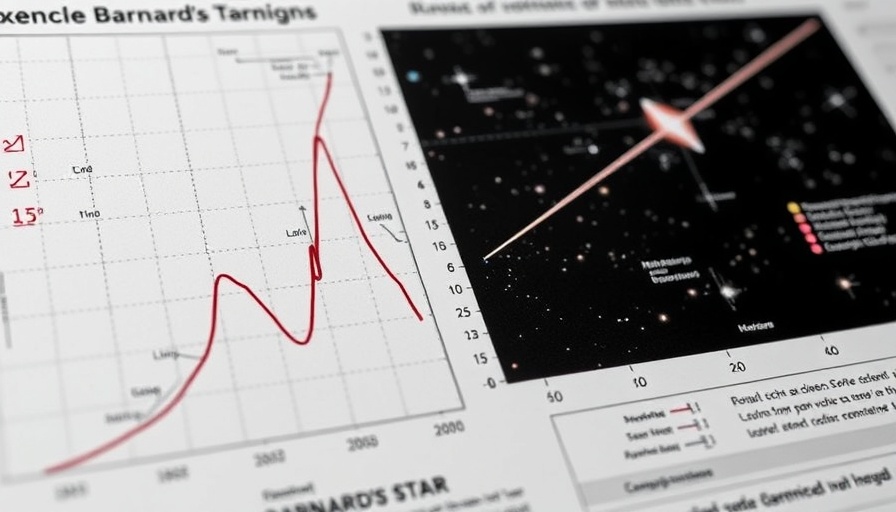
Four New Planets Discovered: A Cosmic Milestone
Recent astronomical findings have unveiled an exciting discovery: four small rocky planets orbiting around Barnard's Star, one of our closest cosmic neighbors, only six light-years from Earth. This discovery presents a fascinating opportunity to expand our understanding of planetary systems beyond our own.
Why Barnard's Star Matters
Barnard's Star is classified as a red dwarf, which constitutes a significant portion of stars in our galaxy. With only 16% the mass of our own sun, it boasts a unique environment compared to other stars. Its relatively cool and stable characteristics make it an ideal candidate for the search for exoplanets. Researchers have maintained a long-standing interest in this star, especially since it is among the closest to our solar system.
The Discovery Process
The detection of these planets was not a straightforward task. Astronomers employed cutting-edge instruments mounted on some of the world's most powerful telescopes, such as the Gemini North telescope in Hawaii and the Very Large Telescope in Chile. Utilizing radial velocity methods, researchers were able to observe the slight wobbling of Barnard's Star, caused by the gravitational pull of its four orbiting planets. This approach allows scientists to detect planets that are otherwise too faint to see directly.
The Characteristics of the Newly Discovered Planets
While these four planets are intriguing, they are currently inhospitable to life as we know it. Closely orbiting Barnard's Star, these planets experience intense heat, making them similar to Mercury in our Solar System. The innermost planet has just 26% of Earth's mass, while the outermost is only 19% of Earth's mass. Unlike any solar system we are familiar with, these small worlds constitute the first confirmed exoplanetary system entirely composed of planets smaller than Earth.
The Implications of This Discovery
While immediate prospects for habitability are ruled out, these discoveries offer crucial insights into the formation and evolution of rocky planets within red dwarf systems. As the study lead, Ritvik Basant emphasizes, understanding these environments helps frame what features we should expect in larger studies of habitability in the universe. Although these planets are too hot to support life now, future research may uncover other celestial bodies that lie within Barnard's Star's habitable zone.
Future Exploration and Research Opportunities
This discovery is only the beginning. The team involved in this research aims to continue examining Barnard's Star, refining their methods to possibly uncover additional planets, particularly those that may lie in a more temperate range. As technology advances, so does our capability to uncover new exoplanets. Techniques like transit spectroscopy from future telescopes, like the James Webb Space Telescope, may allow for detailed studies of atmospheres around these planets.
How This Affects Our Understanding of the Cosmos
The revelation of four small rocky planets orbiting Barnard's Star underscores the abundance of planetary systems like our own. It highlights the unique dynamics at play in these alien worlds, potentially guiding future searches for habitable planets elsewhere in the galaxy.
Conclusion
The identification of four planets orbiting Barnard's Star is a significant leap forward in understanding our cosmic neighborhood. As we harness advanced technology and methodologies, the mysteries around our nearest stellar neighbors may soon yield even more exhilarating discoveries.
This exploration is not just about satisfying curiosity; it opens the door to understanding the vast potential for life beyond Earth. The pursuit of knowledge continues!
 Add Row
Add Row  Add
Add 




Write A Comment